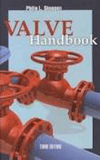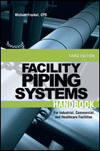Manufacturing Purchasers Are Upbeat About 2004
The forecast found 81% of survey respondents expecting revenues to be greater in 2004 than in 2003. The panel of purchasing and supply executives expects a 9.7% net increase in overall revenues for 2004, compared to an increase of 2.8% reported for 2003.
Manufacturing survey respondents report that profit margins have improved slightly from the fourth quarter of 2003 to the first quarter of 2004, as 36% experienced an increase in profit margins, 29% had lower margins, and 35% reported no change. However, their expectations are for significant increases during the rest of 2004 as 46% predict better profits, 22% predict lower margins, and 32% predict no change.
“Manufacturing seemingly has significant momentum at this point, with near-record strength in new orders and production,” said Norbert Ore, chairman of the Business Survey Committee. However, he cautioned, “The manufacturing sector has a new set of challenges going forward as fear of inflation, higher energy costs, materials shortages and the weaker dollar dominate the list of concerns.”
Capacity Utilization
ISM manufacturers report operating at 85.6% of their normal capacity, up from 80.1% reported in December 2003 and topping 85% for the first time since May 2000. Purchasing and supply executives predict that capital expenditures will increase 6% in 2004, compared to the 2.7% increase reported for 2003. Survey respondents also forecast that they will continue to reduce their purchased inventory-to-sales ratio in 2004.Production capacity is now expected to increase an average of 5.2% in 2004. This compares to an expected increase of 3.8% in the December 2003 forecast for 2004. The principal means of achieving increases in production capacity in 2004 are expected to be (in order of importance):
1. More hours worked with existing personnel.
2. Additional personnel (permanent, temporary or contract).
3. Additional plant and/or equipment.
4. Replaced equipment with technically advanced equipment.
5. Fewer plant shutdowns of operations or facilities.
Manufacturers expect capital expenditures to rise 6% in 2004. This compares to the prediction of 3.2% in the December 2003 forecast for 2004. Industries showing the largest increases in capital expenditures for 2004 - in order of percentage increase - are: Primary Metals; Wood & Wood Products; Printing & Publishing; Industrial & Commercial Equipment & Computers; Fabricated Metals; and Transportation & Equipment.
Prices, Employment, Etc.
After an initial forecast in December 2003 of a 1% increase in prices paid during the first four months of 2004, manufacturing purchasers reported a significant shift in pricing trends due to commodities price escalation. They now report an expected increase of 6.7% for the period.The forecast indicates respondents expect price increases to moderate during the period of May through December 2004 at a rate of 0.9 %. They predict a net average increase of 7.6% between December 2003 and December 2004.
Manufacturers expect that employment in the sector will grow by 4%, while labor and benefits costs are expected to rise an average of 2.4%. Manufacturing purchasers are predicting growth in exports and imports, with exports growing at a slightly faster rate compared with imports.
They also expect the U.S. dollar to maintain its current relative position against currencies of major trading partners, although it has lost some of its strength since December 2003. They predict the prices they pay will increase 6.7% during the first four months of 2004, and will increase an additional 0.9% for the balance of 2004, resulting in significant price escalation for the year.
Looking ahead to the next half year, 59% predict it will be better than the first half of 2004, 9% predict it will be worse, and 32% expect no change. This is consistent with the December 2003 forecast in which respondents indicated a similar expectation.
A special question was asked of purchasing and supply executives to determine their progress in achieving efficiency from the application of technology to supply management. While a few companies rate themselves as being almost finished, 80% are less than three-fourths complete in achieving efficiency from the application of technology.
Looking for a reprint of this article?
From high-res PDFs to custom plaques, order your copy today!





